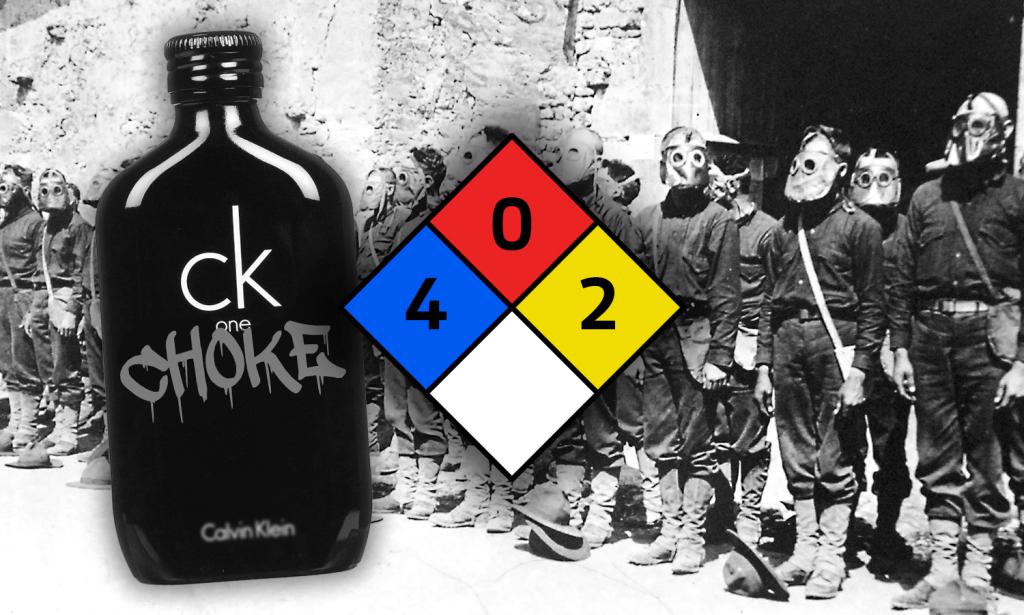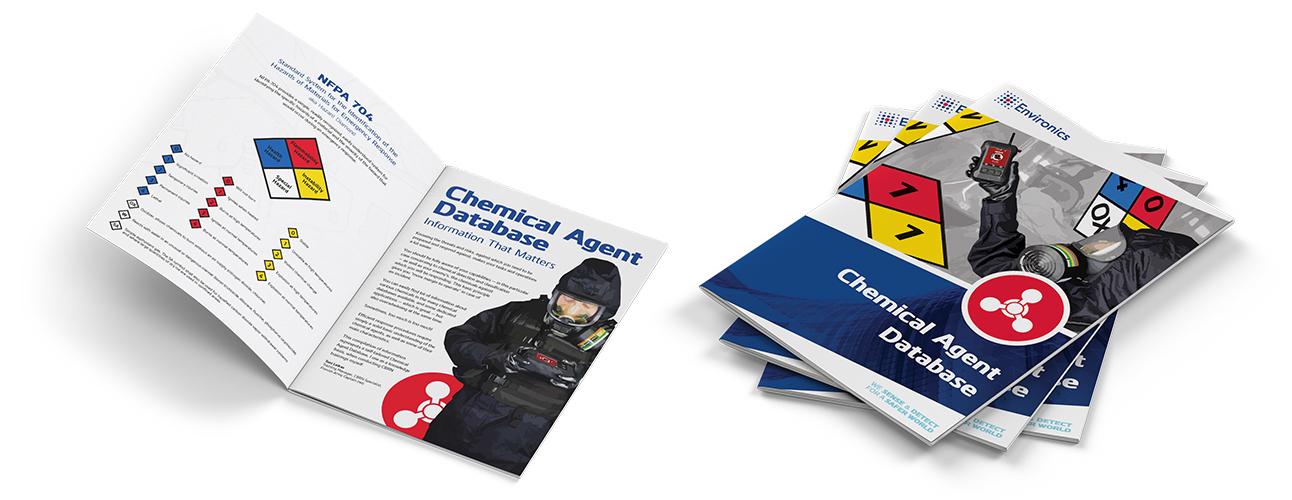Ck One Choke, a Breath Taking Fragrance

Historical Background
Cyanogen chlorine was synthesized for the first time in 1802, by the French chemist Claude Louis Berthollet, although the correct chemical format was later established by his compatriot Louis-Joseph Gay-Lussac, in 1815. Cyanides have been used for their toxic potential since ancient Roman times.
The use of cyanides in warfare was not implemented until World War I. France combined hydrocyanic chloride acid with cyanogen chloride and used it for the first time against the Germans in October 1916. The use of cyanogen chloride in this mixture had the ability to penetrate German masks and cause irritation, making soldiers remove their mask, and completely exposing themselves to these very toxic gases. Cyanogen chloride was also combined with arsenic trichloride later in the war. France was the only country that used cyanogen chloride in the battlefield. They used about 4000 tons without notable military success, because the usage of small munitions could not deliver the large amounts needed to cause effects. Other factors were that, cyanogen chloride has high volatility and high dispersion ability, which reduced the agent’s effectiveness below the lethal concentration (“all or nothing biological effects”).
The U.S. maintained a small number of cyanide munitions during World War II. Japan allegedly used cyanide against China before and during WWII, and Iraq may have used cyanide against the Kurds, in the 1980’s.
Commercial Uses or Precursor Chemicals
Cyanogen chloride is currently used in nylon and synthetic rubber production, pigments and dyes manufacturing, in printing and photography, in metal cleaning and core hardening of metals. It is also used in chemical synthesis and fumigation. Cyanogen chloride is typically stored and transported as a compressed liquefied gas.
Symptomatology
Cyanogen chloride, also known as CK, is a highly toxic blood agent, according to military chemical warfare classification. In commercial use, this chemical is also known as CNCl and it is one of the most rapidly acting poisons.
CK is a colourless liquid with lower boiling point and, therefore, very volatile, whereas the water-solubility is lower.
Its vapours are extremely irritating and corrosive. The pungent odour, that is very irritant to the mucous membranes, nearly completely hides the bitter almond aroma and causes a severe tear flow. CK quickly affects the respiratory systems preventing oxygen transportation to the cells.
Immediate signs and symptoms of CK exposure can be lachrymation, severe irritation on the eyes, skin, and respiratory track, effects on the cellular respiration, convulsions, unconsciousness, lung oedema, and death. Rapid evaporation of the liquid may cause frostbite on unprotected skin.
Response
Leave the area, evacuate the exposed people into fresh air, and stay upwind. CK vapours may be heavier than air. They will spread along the ground, collect and stay in poorly-ventilated, low-lying, or confined areas.
For first responders, the protection level in an unknown situation, is the highest level.
In a small spill or leak (less than 200 litres) the initial isolation distance in all directions is 300 meters and the protection distance during day is 1,8 kilometres, changing to 6,4 kilometres during night.
In a large spill/leak (more than 200 litres) the isolation area is 1 kilometer in all directions, and the protection distance during day is 9,7 kilometres, changing to 11+ kilometres during night.
Cyanogen Chloride decomposes on heating, producing toxic and corrosive fumes of hydrogen cyanide, hydrochloric acid, and nitrogen oxides. When in contact with water, or water vapour, it reacts slowly, and as a result of that reaction it produces hydrogen chloride.
Would you like to know more?

Get your own issue of the “Chemical Agent Database – Information
That Matters” and gain access to extra content!
Informative aгticle, just what I wanted to find.